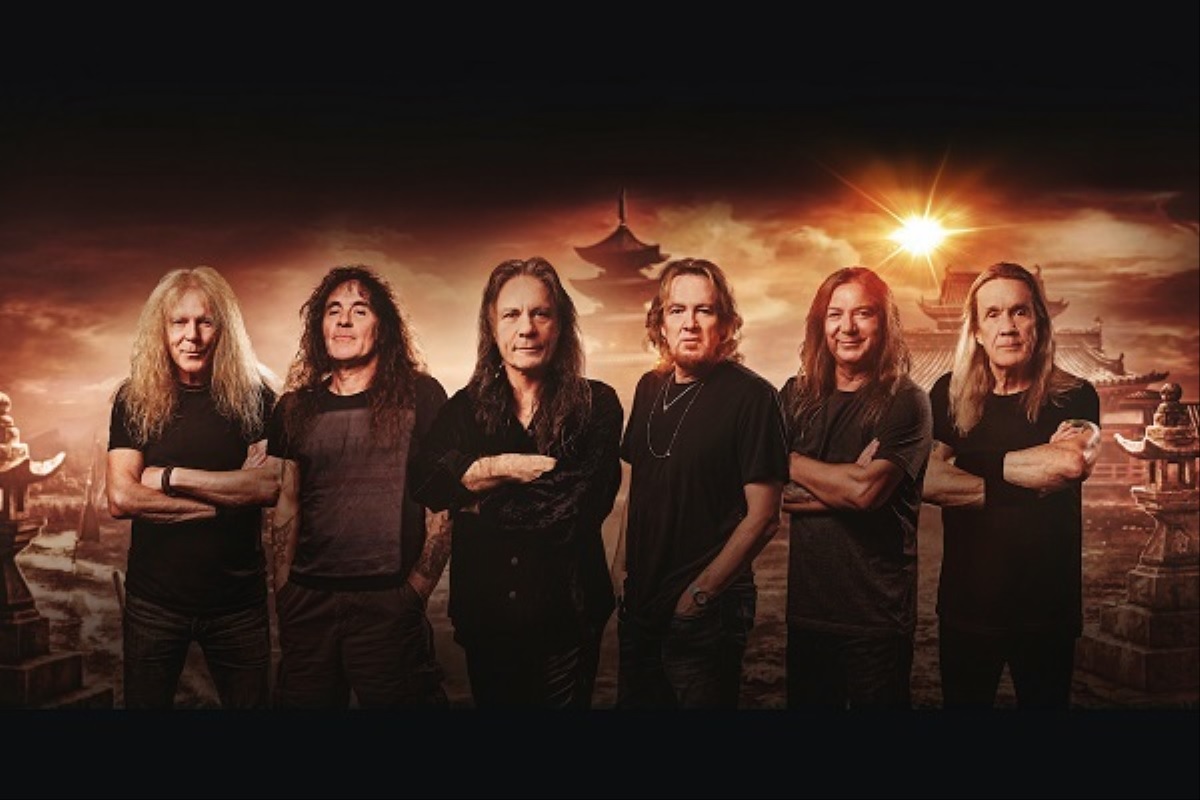
Iron Maiden built legends, not just albums, especially during the 1980s and 1990s. From classic heavy metal thunder to darker, moodier tones, they evolved, experimented, and occasionally stumbled, but those high points still shine. Here are the four that I truly believe are their best in that span, why they stand out, and why you should blast them on repeat.
The Greatest Iron Maiden Albums of the 1980s and 1990s
1. “The Number of the Beast” (1982)
If you want Maiden at their most iconic, start here. “The Number of the Beast” was the first album featuring Bruce Dickinson as lead vocalist, and it changed everything. As LouderSound notes, this is “one of the most influential and iconic heavy metal albums of all time.”
Songs like “Run to the Hills,” “Hallowed Be Thy Name” and the title track deliver both theatricality and aggression, Dickinson’s voice soars, Steve Harris’s bass gallops, and the songwriting balances ferocity with melody. The album also marked Iron Maiden’s leap into mainstream metal while keeping credibility with the underground. If heavy metal had a crown, this album wears it.
2. “Powerslave” (1984)
Next up is “Powerslave,” the fifth studio album, and a full platter of what Maiden does best: epic riffs, storytelling, speed, and grandeur. LouderSound calls it “the best Maiden album,” and says it is the moment when the band embraced adventurous, progressive leanings while still keeping it metallic and muscular.
Highlights? “Aces High” charges in like a war plane, “2 Minutes to Midnight” rips through political commentary, and “Rime of the Ancient Mariner” is a 13 minute epic that builds mood, propels with drama, and never drags. Also, its tour (the World Slavery Tour) solidified Maiden’s reputation as a band that does not just play music, they put on experiences.
3. “Seventh Son of a Seventh Son” (1988)
By 1988 Iron Maiden were already metal royalty, but “Seventh Son of a Seventh Son” pushed them into a richly prog tinged zone, balancing synthesizers, concept themes, and emotional depth. LouderSound describes it as “a flawless masterpiece … the icing on the cake of an eight album run” that is not yet bettered in heavy music history.
This album’s vibe is moody and ambitious: “Moonchild” opens with mystique, tracks like “Can I Play with Madness” and “The Evil That Men Do” are at once catchy and complex, the title track and “The Prophecy” push the progressive elements. It is less raw than early Maiden but more emotionally expansive, a mature band comfortable pushing limits.
4. “Fear of the Dark” (1992)
Switching into the ’90s is tricky, Maiden’s work there is more divisive, more experimental, and yes, sometimes uneven. But “Fear of the Dark” stands out. It is one of the very few ’90s Maiden albums that both fans and critics still cite with affection. LouderSound notes that despite criticism of the era, this record remains a fan favorite.
Released in 1992, it was their third studio album to top the UK Albums Chart. It blends Maiden’s classic strengths, soaring vocals, large riffs, dramatic dynamics, with some darker mood shifts. The title track “Fear of the Dark” remains one of their most enduring songs. And while some songs and production decisions divide listeners, there is a warmth, a grandeur, and a sense that even in change, Maiden still knew who they were.
Why These Four Iron Maiden Albums?
I picked these albums because together they trace Maiden’s core evolution:
“The Number of the Beast” represents their breakout into full power, with Dickinson lifting the band’s ambition.
“Powerslave” is the peak of their 1980s might, blending showmanship, epic scope, and metal chops.
“Seventh Son of a Seventh Son” shows maturity and willingness to experiment, without losing the energy.
“Fear of the Dark” is their ’90s answer: less polished, maybe more uneven, but filled with heart, mood, and a certain majestic persistence.
They show Maiden growing, wrestling with expectations, embracing complexity, and often triumphing.
A Note About Other Albums & The ’90s
It is not that albums like “No Prayer for the Dying” (1990), “The X Factor” (1995), or “Virtual XI” (1998) are bad, they have moments, loyal fans, worthwhile songs. But many critics and fans argue they are not as cohesive or iconic as the four above. “No Prayer for the Dying” gets criticism for inconsistency and too much filler. “The X Factor” and “Virtual XI” are often seen as experimental uneven terrain, especially with vocalist changes and different production choices. LouderSound digs into those struggles in detail.
So, while those albums are part of Maiden’s story, they do not shine as brightly (to my ears at least) when you consider influence, consistency, and impact.
Listening Order & Tips
If you are newish to Maiden, here is a listening order that helps you feel the growth:
1. “The Number of the Beast”
2. “Powerslave”
3. “Seventh Son of a Seventh Son”
4. “Fear of the Dark”
You will hear raw energy in the early ’80s, peak theatrical metal in the mid ’80s, prog edge at the end of the decade, and a shift in mood and style in the early ’90s.
Also, do not just skip songs. Some of Maiden’s greatest moments are tucked in deeper (“Moonchild,” “The Clairvoyant,” “Fear Is the Key”) and maybe are not obvious hits but hit you right in the feels. Up the Irons.
- The Best Iron Maiden Albums of the 1980s and 1990s - October 1, 2025
- Metallica’s Greatest Songs Before ‘The Black Album’ - September 29, 2025
- 5 Underrated Megadeth Deep Cuts - September 28, 2025
